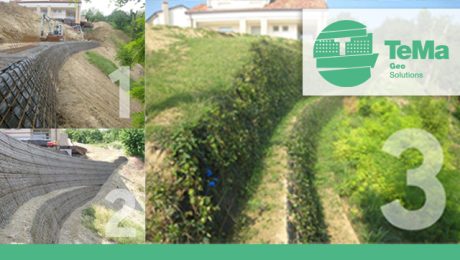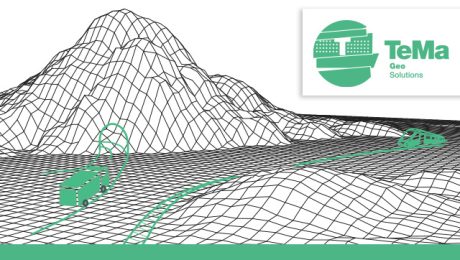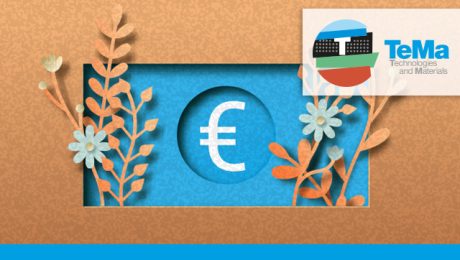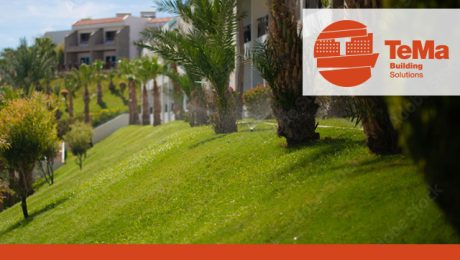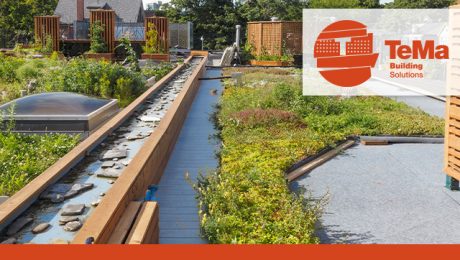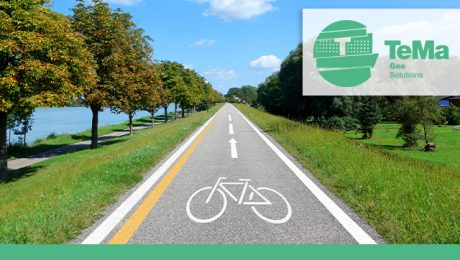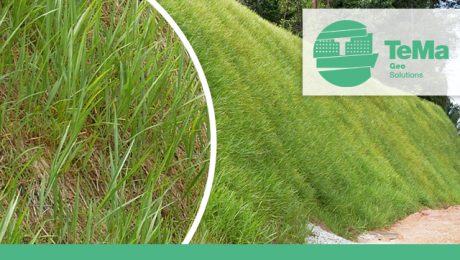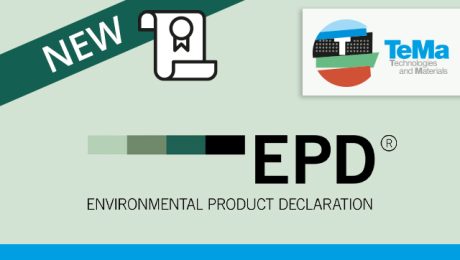‘Natural’ solutions for dry slopes with TeMa products
Environment, climate, energy, territorial planning, natural risk prevention, and water resource research and management are what researchers and planners have to deal with today in connection with environmental works. These are all ‘watchwords’ in the modern world of geotechnics, which require specific know-how and the use of suitable materials, in the awareness that the search for solutions is constantly evolving. With a proactive approach that provides geotechnical applications for soil protection, and expertise to aid the sustainable management of processes, we can now carry out the required works while making the land safe and harmonising the landscape.
Surface water shapes the soil, now more than ever before, due to the increase in extreme events. Today, there is a growing awareness that the ‘natural’ resources we have at our disposal are capable of limiting the effects of scouring and runoff. On dry slopes, for example, soil erosion is the process whereby materials are removed by the mechanical and chemical actions of wind and water. From a technical/scientific perspective, a further distinction is made: in addition to the concept of soil erosion , there is soil loss and sediment yield .
The effect of weathering on the soil is therefore a phenomenon to be foreseen and controlled. On the surface, the causes cannot always be detected, but a Geologist – after carrying out the necessary research – will pinpoint the problems and recommend solutions.
The main phenomena associated with soil depletion are:
- the thickness of arable soil, which includes organic substances, water, mineral salts and fine particles, decreases on a local scale: within a few generations, fertile soil can become arid;
- accelerated and uncontrolled surface erosion can cause landslides on steep slopes, increasing the extent and intensity of crumbling to the point of destroying the vegetation cover of an entire slope;
- eroded material is carried downhill, thereby reducing the capacity of watercourses and thus increasing the risk of flooding;
- the sedimentation of eroded material that ends up in irrigation channels decreases their efficiency and service life;
- eroded material, often laden with chemicals from agricultural practices such as fertilisers and insecticides, instead of being absorbed by the soil, becomes concentrated in watercourses, spreading pollution over a wider area.
The new design concept – determined by precise environmental choices – undoubtedly promotes sustainability. In this respect, on dry slopes, soil ‘helped’ by suitable products to encourage revegetation becomes a very strong ‘barrier’ to inclement weather over time.
By observing the grassed embankments bordering major road and railway routes, we can appreciate the need, which is met, to protect the safety of infrastructures against problems of topsoil slippage. These are artificial embankments, created to meet technical requirements. They were therefore barren at the time of construction, and hence exposed to the impact and removal of soil by rainwater. Ensuring grassing therefore increases the level of safety, improves visual impact and, last but not least, respects biological diversity that is preserved.
New TeMa Geo Solutions materials make these solutions possible. To encourage vegetation to take root, TeMa has come up with K-Mat synthetic geomats and biomats in natural fibre matting (straw, coconut and jute), ECOVERMAT and ECOVERNET, in addition to the X-Grid PET-C AMrange of geomats, which are also useful for reinforcing slopes.
TeMa, an Italian company established in 1993, has gained experience on 4 continents with products for the world of geotechnics, which are trusted by planners and contractors. Over 30 years of providing geotechnical solutions that aid the soil with its own erosion control and stabilisation potential, resulting in a clear environmental advantage.
- Published in Dry slopes, Erosion mats, GEO
TeMa Geo Solutions: geotechnical solutions
The TeMa Geo Solutions division has developed considerable experience in geotechnical applications and developed technologies and products, thereby ensuring that designers can meet increasingly strict regulations concerning the environment and the landscape.
These applications are for the protection, maintenance, retention, reinforcement and drainage in the field of major environmental projects, involving products that provide innovative efficient and long-lasting solutions.
We are aware that a kind of public resistance to sustainability announcements has already begun. We are therefore interested in helping companies that are taking appropriate action to protect the environment. This is not only to ensure that they can better comply with regulations but also, and above all, to increase the effectiveness and credibility of their work.
TeMa Geo solutions in applications
The areas of expertise of TeMa Geo Solutions include:
- football fields
- landfills and contaminated sites
- tunnels
- reinforced soil retaining structures
- dry slopes
- grassy road and railway embankments
- roads
- drainage ditches
- horse training and racing tracks.
Products and functions: a range starting with geosynthetics
Geogrids are structural elements used to reinforce soils in the construction of retaining walls, block retaining walls, reinforced soil retaining structures, landfills and contaminated sites. The open mesh structure allows the reinforcement geogrids to develop ‘passive’ resistance at the transverse ribs, thus effectively increasing their inherent stabilising effect and enabling the system to withstand significant levels of stress.
The TeMa Geo Solutions range includes uniaxial or biaxial X-Grid geogrids made of fibreglass, polyester or PET coated with a polymer layer, coupled, or not, with a nonwoven geotextile, to be chosen to suit the project.
Offering products such as bentonite geocomposites, drainage geocomposites, facings, erosion control mats and essential accessories, the TeMa Geo Solutions range fulfils various functions for the retention anddrainage of rainwater and groundwater.
The TeMa Geo world offers its long-standing (since 1993) expertise and experience in the polymer-based product category (geosynthetics). Over the years, research at its in-house labs has enabled the development of solutions that integrate with the environment in a more specific sense, such as biodegradable erosion control mats, and in a broader sense, such as geomats and studded membranes.
TeMa also offers cutting-edge geotechnical solutions for vineyards
This is not surprising, as the TeMa Geo headquarters are situated on the eastern edge of the Prosecco hills, a UNESCO World Heritage Site. The company therefore has made its experience available to preserve and protect the viticultural landscape with its products for erosion control, reinforcement and ground drainage in an environment subject to the passage of agricultural vehicles. Click here to download the specific catalogue.
Sustainable finance: sustainable development
It’s interesting to realize just how much the environmental culture of a business can be a way to accelerate its development, even by allowing it to access finance that’s vital for its growth and innovation: this is where the concept of sustainable finance comes in.
No self-respecting company report is complete without covering sustainability, the circular economy, wellbeing and the environment, which have different connotations for different businesses and are promoted to varying extents over the course of their lives.
The fact that this has become a “mature” issue can be seen in the need and, indeed, the will of companies to meet the requirements of ESG “certification” (Environmental, Social and Governance), since those companies who are attuned to these worlds are destined to have a more productive future and be more attractive to financial backers.
So, by sustainable finance we mean finance that supports the capital and investments of businesses with future-proof projects, especially from an environmental point of view. This is a practice aimed at investing to develop production processes, in addition to funding research into raw materials and end-of-life disposal of products, with the upstream decision process generally focusing on protecting the planet.
The cornerstones of sustainable finance
There are three factors taken into consideration, into which the tangible application of sustainable development can be narrowed down.
- Environmental factors: these include issues like the need to promote greener, more energy-efficient production processes. They very much hinge on the themes of circular economy and zero-emission activities, as well as on preventing pollution and protecting biodiversity.
- Social factors: these focus more on reducing inequality and on developing an inclusive system, one that is pro-human rights, in addition to investing in training and in the wellbeing of communities.
- Governance factors: these ensure that both environmental and social factors are included in the company‘s decision-making processes.
TeMa and sustainability
TeMa Technologies and Materials has long been a believer in using sustainable materials and creating sustainable solutions, even in the building and geotechnical fields.
Reinforced soil projects, on both a small and large scale, are a case in point: the technique of using soil as a retaining material, instead of concrete, certainly makes the structure more environmentally friendly, providing benefits in terms of both the landscape and liveability (they often double as noise barriers, click here for more information).
We provide 30-plus years of experience in the development of geogrids and geomembranes supplied in rolls, which are easy to carry to even the most inaccessible sites, and are ideally suited to the construction of landfills, tunnels, roads, reinforced soil projects and drainage ditches.
In addition to the many advantages in terms of construction, they come with the no small benefit of energy savings and the reduction in air pollution achieved when using geomembranes instead of traditional gravel: in terms of transport alone, the number of trips (trucks) drops from 100 to 1.
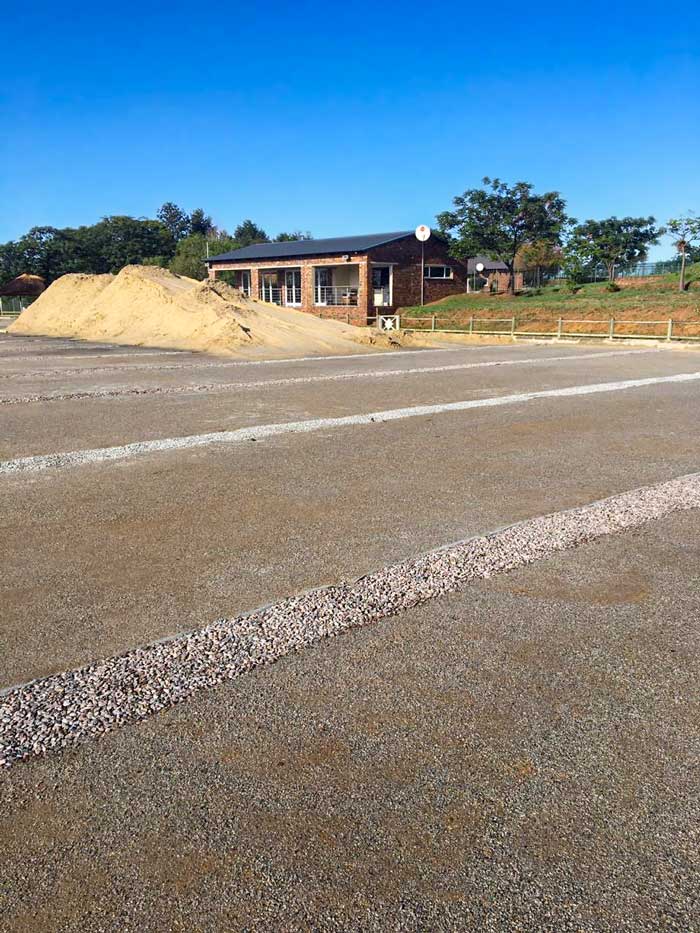
Out of our many past projects, one standout would have to be the track of a race course in Johannesburg, in South Africa.
In addition, TeMa supplies sustainable products like natural fibre matting — made from materials such as jute, straw, coconut and cellulose — that are particularly well suited to surface erosion control on grass slopes.
- Published in CORPORATION, Research and development, TeMa Technologies and Materials
Reinforced earth retaining walls: specific products for each function
The function of retaining wall structures is to retain and reinforce soil faces. They can be built in a multitude of areas, including private ones such as gardens and vineyards, as well as public areas such as roads, railways and embankments.
They meet the need to recover usable spaces as they can also be built with a steeply sloping face.
The authentic green appearance
Nowadays, the modern building industry is highly aware of sustainability and territorial integration. Under certain conditions, reinforced earth retaining walls can replace conventional concrete walls, without underestimating the aesthetic appearance of the landscape. This is even more important in areas subject to landscape restrictions that require the preservation of natural aspects using specific materials and construction techniques.
TeMa Building solutions integrate these trends by catering to various problems concerning land conformation and hydrogeological protection.
The functions of reinforced earth retaining walls and the products required to achieve them
Slope gradient, exposure to weather conditions (including severe ones) and the mechanical properties of the terrain often require technical solutions that stabilise a slope. Synthetic products can be used, each one performing a specific function.
Reinforcement with geogrids
The compressive strength of the soil is combined with the tensile strength of the geosynthetic product (such as T-Grid). The friction involved develops a tensional state that stabilises the structure.
Profiling with formwork units
Electro-welded metal structures such as formwork units provide a shaping of the soil face up to a 65° slope.
Controlling surface erosion with erosion control mats
Severe or prolonged weather conditions, such as strong winds and sudden downpours – and the resulting surface run-off of water – could lead to erosion and depletion at the face of reinforced earth layers, particularly if they are fully greened. The solution to this problem is to use, on the face of each layer, three-dimensional synthetic mats such as T-Mat made of polypropylene or K-Mat FG Green made of fibreglass. Alternatively, natural, biodegradable mats made of jute fibre such as T-Juta 500 can be used (also available in an XLversion).
Soil containment using gabions
An alternative solution to reinforced earth walls can be found in walls built using double-twisted wire mesh gabions, such as T-Gabion, filled with pebbles. Gabions are also an interesting solution for smaller residential projects: they provide containment while offering a different and innovative aesthetic appearance.
- Published in BUILDING, Retaining walls, Retaining walls elements
Green surfaces and green roofs: benefits and technical ins and outs
In recent years, “green” has become more and more of a buzzword, encompassing simple and cost-effective solutions that can be adopted by anyone with a roof. We’re talking green roofs, which, in addition to bringing undeniable environmental benefits, are the perfect place for relaxing with the family or enjoying summer drinks with friends. The origins of roof gardens date back to ancient times — think Hanging Gardens of Babylon — and, today, are built for extreme reliability, including long service life, with excellent products producing even more advantages.
Let’s take a look at the full picture in detail.
The advantages of green areas
For the environment
Plants and grass are natural carbon sinks, absorbing CO2 and releasing oxygen, in addition to filtering particulate matter. In addition, they lessen the urban microclimate effect by lowering temperatures by several degrees centigrade, and reduce electrosmog caused by any electronic device.
They muffle noise and, if designed well, absorb and retain the early sudden downpours associated with significant rain events.
A series of sustainable improvements for urban wellbeing, improving air quality with less smog and particulate matter.
For occupant comfort
Vegetation also acts as natural thermal insulation — which is no small advantage given the energy crises of recent months — and soundproofing in loft bedrooms. Furthermore, it provides the roof with effective protection against UV rays, mechanical stress and daily variations in temperature, thus increasing the average service life of waterproofing.
Lastly, creating a garden on a roof increases the value of the property.
From a technical point of view
A green roof build-up comprises a number of layers, including geosynthetics offering better performance than traditional systems in terms of drainage, mechanical protection of waterproofing, and filtration. The products used are lighter and non-bulky, easy to transport and quick to install.
Functions required of the roof
There are 4 main functions involved:
- Reservoir (to hold rainwater for irrigation purposes until it is needed) and drainage (to remove excess water). This combined function is addressed with 20mm HDPE studded membranes T-Kone H XL and T-Kone H XL S.
- Control of surface erosion caused by atmospheric agents. This function is addressed with natural fibre matting T-Juta 500 and the synthetic geomat T-Mat.
- Drainage. This is where T-Mix Drain 20 SS comes in, the cuspated-fibre geomat sandwiched between 2 geotextiles.
- Mechanical protection of waterproofing. The geotextiles from the Tematex NW PET range, in white and black, fit the bill.
- Published in BUILDING, Flat green roofs
Cycle and pedestrian paths: solutions to make them safer and more attractive.
Longer days, milder afternoons, a great desire to spend time outdoors and perhaps get some physical exercise, but also go to work and school or visit a friend… These are all good reasons for using, when available, cycle and pedestrian paths, possibly far from urban traffic.
The advantages of sustainable mobility
We are increasingly talking about environmental sustainability and the physical and psychological benefits of physical exercise:
- Less air and noise pollution caused by traffic.
- Reduced transport costs.
- Greater freedom of movement.
- Enhanced green areas in cities.
- Better quality of life by doing a bit of sport on a daily basis.
TeMa Geo Solutions for safety and urban benefits
‘Unequipped’ roads can be hazardous for those who choose to get around by bicycle: for this and environmental reasons, cycle and pedestrian paths are the ideal solution, as they are increasingly becoming part of local government mobility plans.
TeMa Geo Solutions offers all its experience by combining reinforced earth structures and their feature of being green, with cycle and pedestrian paths.
An embankment can be made or a road widened with its sides sloping at 65°/70° using the T-System (consisting of formworks, X-Grid PET geogrids and K-Mat FG Green erosion control mats as facing), thereby making the path safe and allowing a slope to turn green again. Making a slope green again provides a natural erosion control function: to encourage it, TeMa Geo Solutions recommends installing natural or synthetic mats. To make the structure stable, the T-System for reinforced soils adopted by TeMa involves using X-Grid PET geogrids.
Controlling surface erosion with biomats and geomats
Soil erosion is an almost inevitable natural phenomenon that has become a greater concern in recent years due to the worsening climate situation – in Italy, for example, 132 extreme weather events were recorded between January and July 2022, a higher number than the annual average over the last decade – combined with long periods of drought.
Strong winds, heavy rain, hail and runoff tend to remove the surface layer of exposed soils, which often include organic matter and seeds. Climate change facilitates erosion, making it not only inevitable but also hazardous if left uncontrolled.
It’s essential to counter or mitigate the phenomenon: soil provides us with food, biomass and raw materials; human activities take place on it and it’s part of the landscape and our cultural heritage.
Which structures are more subject to surface erosion?
The areas of application most affected by the erosive action of the climate are:
- slopes and the sides of landfills and contaminated sites, and those that have been grassed for appreciable aesthetic improvement;
- reinforced earth structures, more specifically terracing in vineyards and the embankments of canals or rivers;
- ascending/descending ramps from flyovers, tunnel entrances and noise barriers on roads and railways;
- dry, rocky slopes, of all angles, that shape the terrain of Italy.
The effects of surface erosion
The uncontrolled removal of the surface topsoil and the failure of vegetation to take root results in ‘thinning’ of the soil and a risk to the stability of sloping areas.
What can be done to prevent surface erosion?
We should begin by pointing out that a case-by-case assessment is required that considers many variables, such as the nature and uniformity of the soil, the slope gradient, the type of slope (dry or rocky) and the weather conditions in the area where intervention work is to be carried out.
In general, vegetation, whatever type it is, has a natural ability to protect soils from erosion. So the best course of action is to quickly encourage grassing and then apply biodegradable mats made of jute, straw, coconut and cellulose fibre, which can also be pre-seeded.
TeMa Geo Solutions recommends biomats such as Ecovermat, Ecovermat P and PC, and Ecovernet.
Alternatively, or combined with these, synthetic geomats, mainly made of polymer monofilaments, can be used.
Once laid, they are covered with another layer of soil: in this way, the roots of growing vegetation will become entangled with the geomat, creating an almost permanent erosion protection system.
Once again, TeMa Geo Solutions offers a wide range of geomats to choose from.
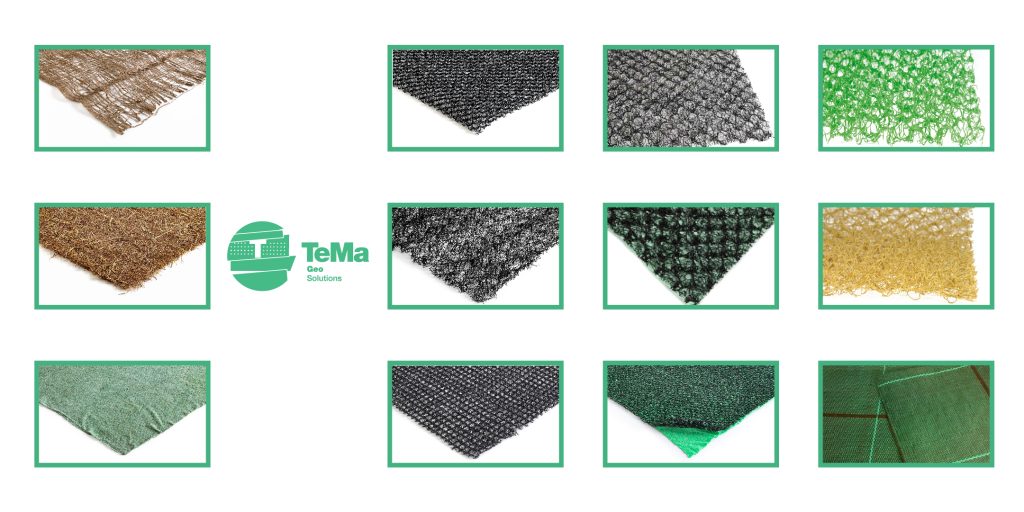
Uncertain about what to choose? We can help you. CONTACT US!
TeMa even more transparent about sustainability
With the new EPD certification, TeMa Technologies and Materials provides information about the level of sustainability of its products: this includes most of the membranes and geocomposites manufactured on its production lines. For 30 years, TeMa has regarded environmental protection as a duty and obligation towards the community and future generations.
What is EPD and what is analysed to obtain it?
The Environmental Product Declaration (EPD) is a document that provides specific data on the life cycle of products or a service. It measures the impacts that the production and life phases of a product have on the environment by means of a Life Cycle Assessment to determine the consumption of resources such as water, materials and energy.
It is voluntary and verified by the independent third party SGS so that certified declarations can be given to clients.
International acknowledgement
The EPD document is internationally acknowledged, as it complies with ISO standards. This ensures use, credibility and stability over time, making the data collected available for use in any type of environmental management system and providing information for environmental certification protocols for buildings and infrastructures.
Which product lines from TeMa Building Solutions are EPD certified?
The products having obtained EPD certification are:
- the studded membrane line, which includes Membrana Nera, Membrana Nera Geo, T-Kone, Tefond, HDD, TM and MD;
- the monofilament drainage line comprising Q-Drain C and Q-Drain ZW;
- the anti-erosion and reinforcement geomat line, which includes K-Mat and X-Grid AM.
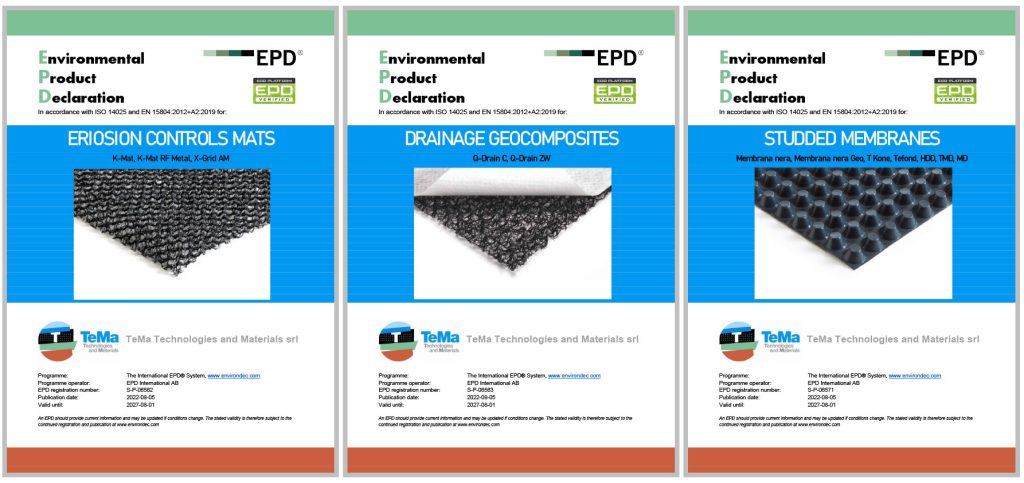
Our certificates can always be consulted by clicking here and entering TeMa in the filters.
- Published in CORPORATION, news, TeMa Technologies and Materials

